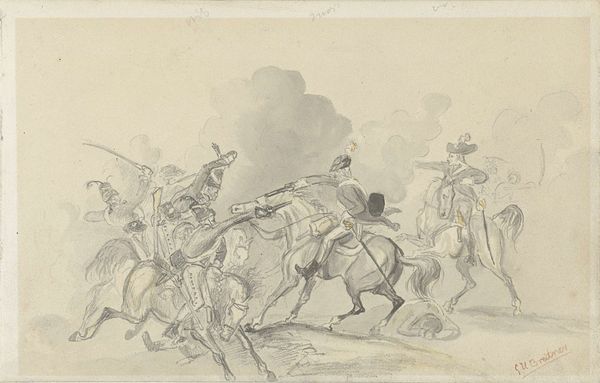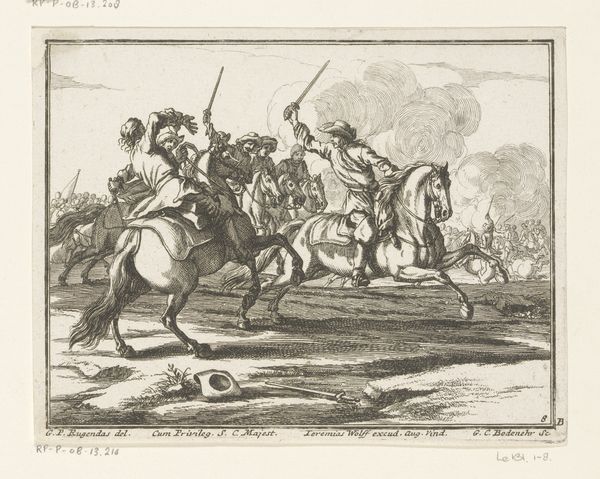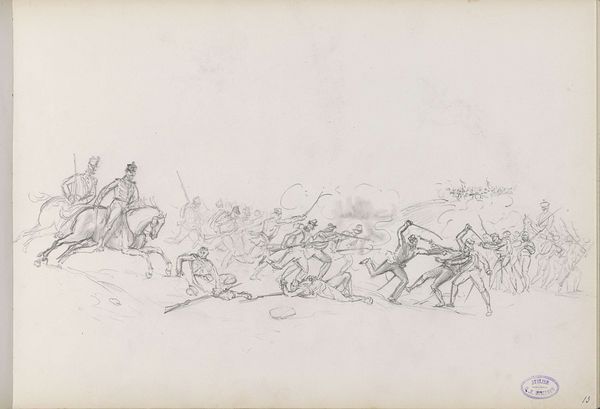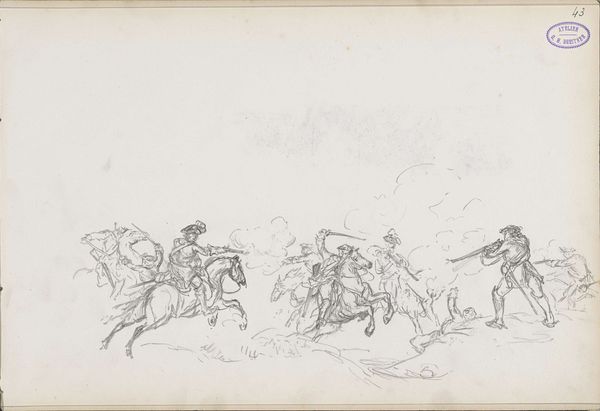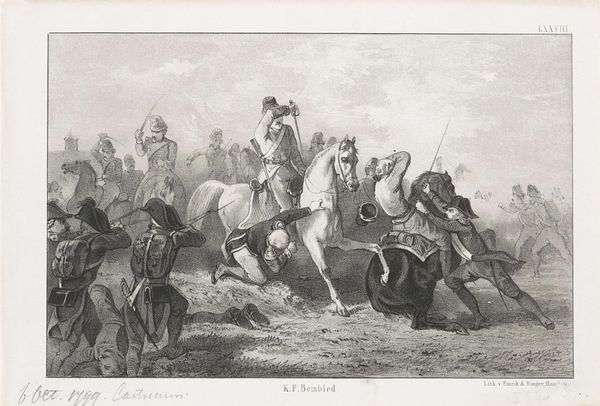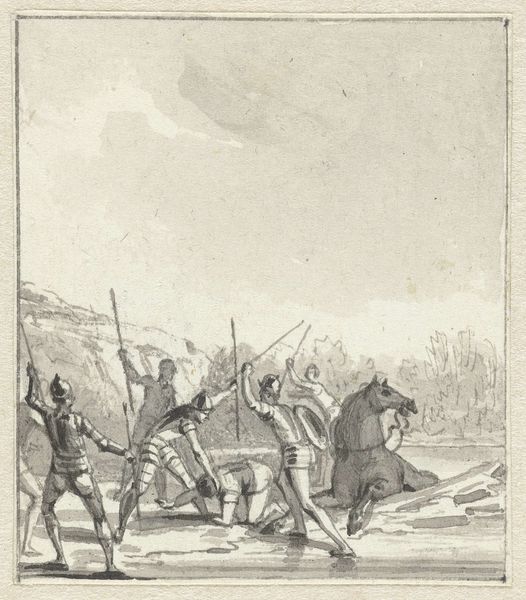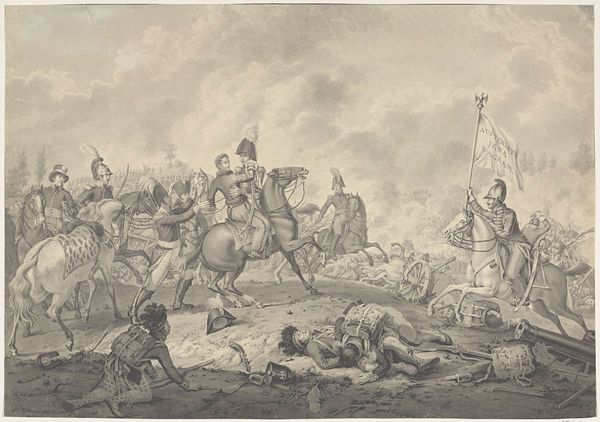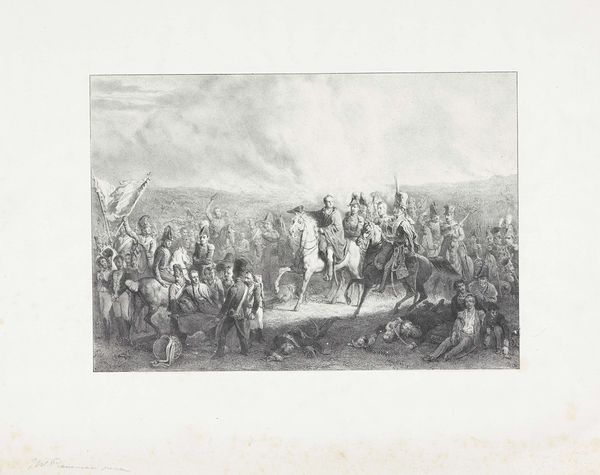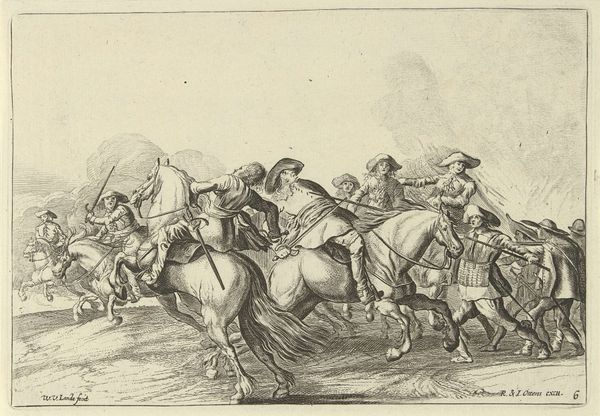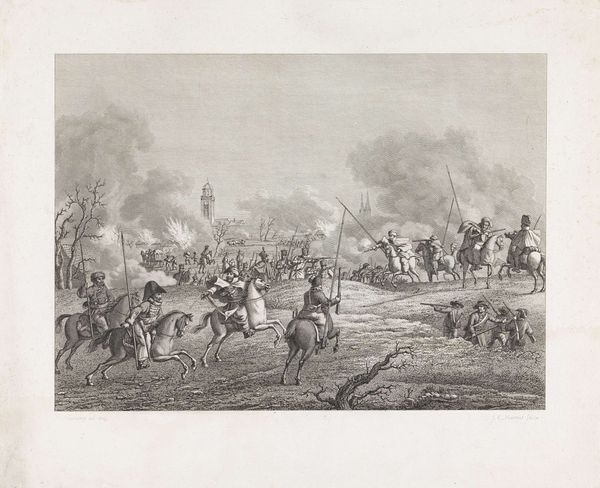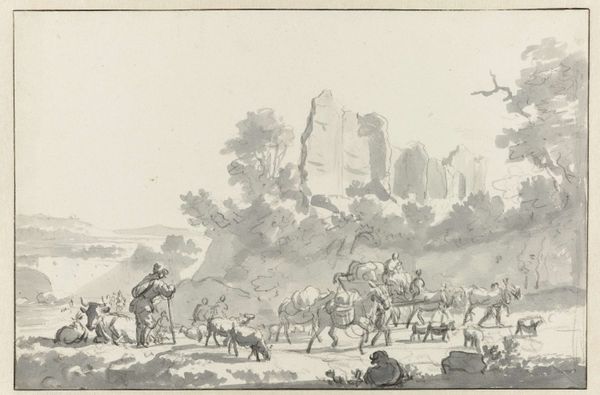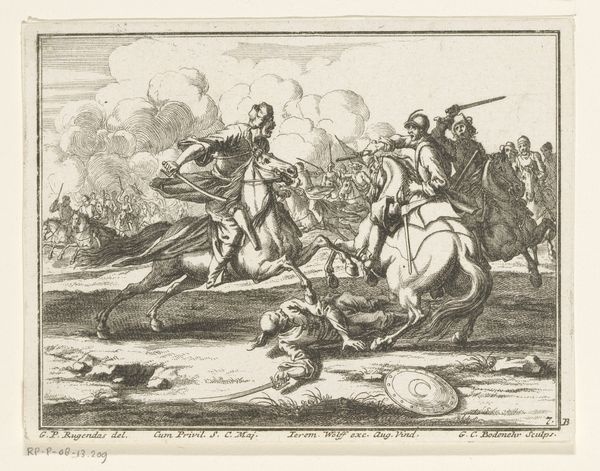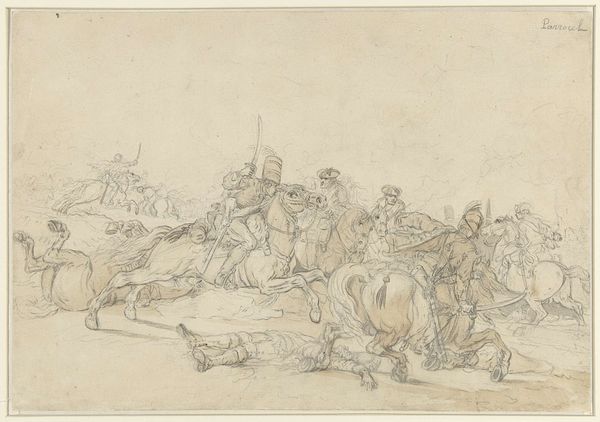
Dimensions: height 134 mm, width 210 mm
Copyright: Rijks Museum: Open Domain
Editor: So, this is "Ruitergevecht" – "Cavalry Skirmish" – by George Hendrik Breitner, dating sometime between 1867 and 1923. It's a pencil and graphite drawing. It feels incredibly dynamic, chaotic even. All these horses and soldiers tangled up... what do you see in this piece? Curator: Beyond the surface action, I perceive layers of cultural memory embedded within this image. Notice how the swirling pencil strokes create an atmosphere of both excitement and terror. Do you think Breitner's choice to render this scene in pencil, rather than paint, impacts the symbolism of the conflict? Editor: It does make it feel less… grand, maybe more immediate, like a news sketch. So, what symbols do you think are most prominent? Curator: The horse, throughout history, has been a symbol of power, virility, and even freedom. But here, are the riders truly in control, or are they themselves swept up in the chaotic energy of war? The sword, of course, represents authority and aggression, but also justice. Does the way the sword is wielded here suggest a sense of righteousness or just brutal violence? Editor: I see what you mean. One soldier is falling, seemingly vulnerable. It makes the whole idea of glory in battle seem... complicated. Curator: Exactly. This resonates with a broader cultural understanding of the psychological weight of conflict. This is where history, anthropology, and psychology intertwine. Are we meant to see heroes, or victims, or something in between? What emotions does this clash evoke for you personally? Editor: Honestly? Anxiety. It makes me think about the cost of conflict, even when it’s romanticized. Curator: Precisely. Breitner captures that unease, challenging viewers to consider the long-lasting psychological impact that extends beyond the immediate drama. Thanks for sharing your thoughts. It definitely enriched how I interpret this work.
Comments
No comments
Be the first to comment and join the conversation on the ultimate creative platform.
